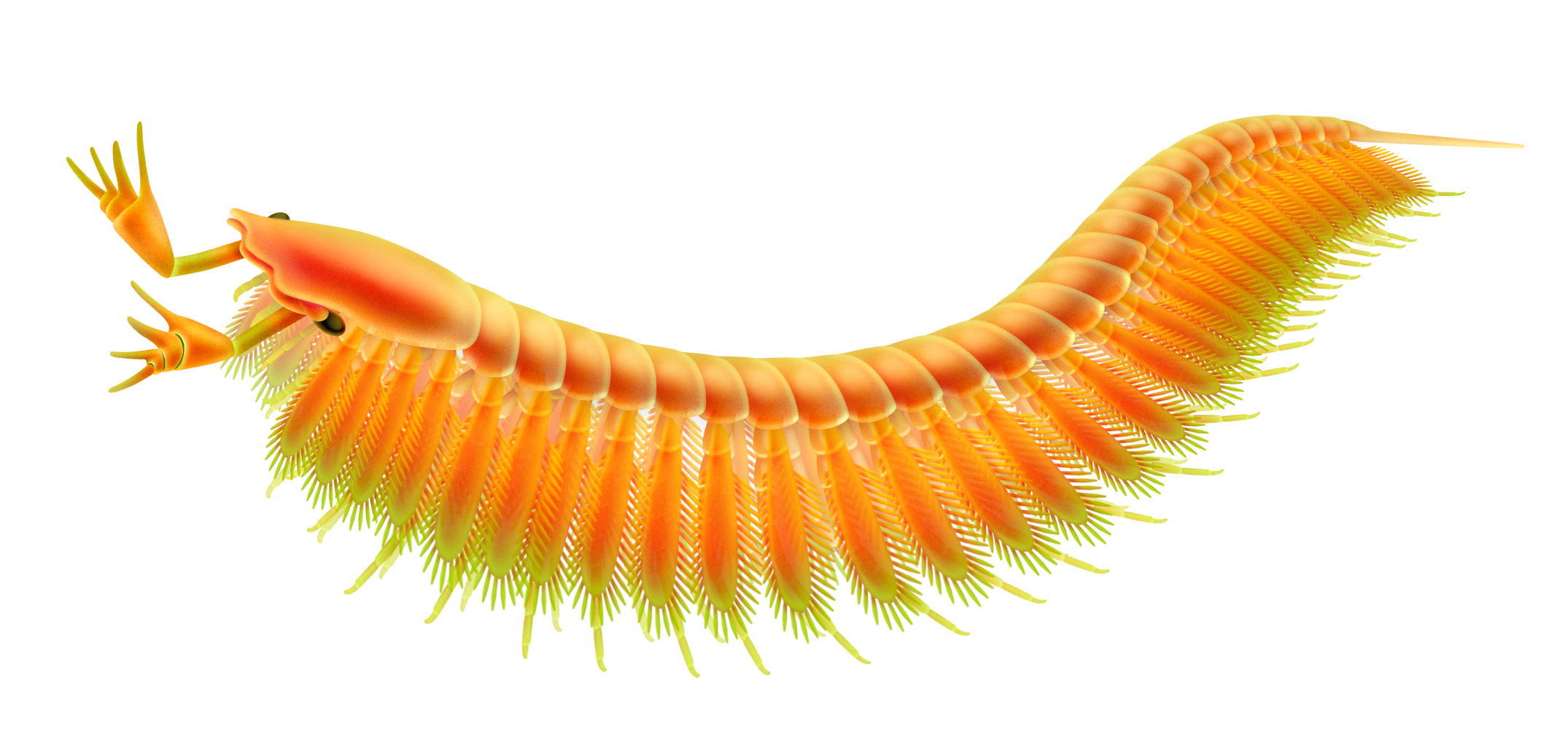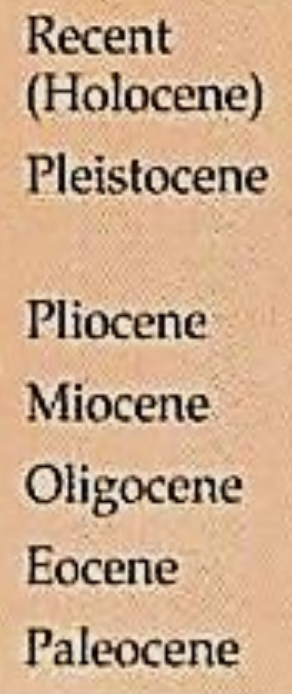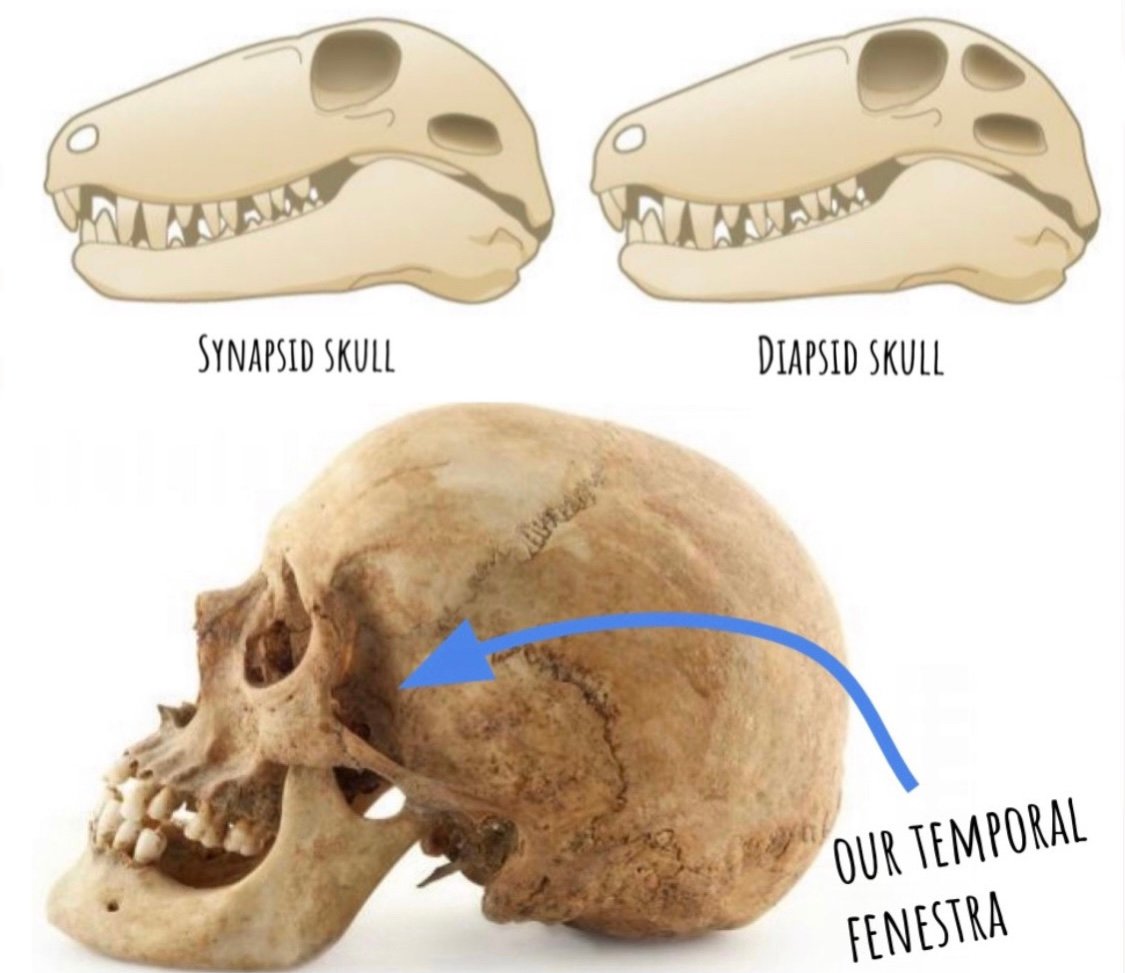Bio 140. The Origin and Diversification of Life
1/88
There's no tags or description
Looks like no tags are added yet.
Name | Mastery | Learn | Test | Matching | Spaced |
|---|
No study sessions yet.
89 Terms
Abiotic synthesis and accumulation of small organic molecules.
Joining of monomers into polymers.
Formation of protobionts.
Origin of heredity during or before protobiont appearance.
What are the Four stages of chemical evolution?
__________ synthesis and accumulation of small __________ molecules.
Joining of __________ into __________.
Formation of __________.
Origin of heredity during or before __________ appearance.
Oparin and J. B. S. Haldane (1920s)
They postulated that the reducing atmosphere and greater UV radiation enhanced reactions, joined simple molecules to produce the first organic molecules.
Stanley Miller and Harold Urey (1953)
They tested the Oparin-Haldane hypothesis in the lab using their famous experiment
Miller-Urey Experiment
This proved that simple organic molecules exist in space and can be produced by abiotic chemical reactions
Miller-Urey Experiment
apparatus with H2O, H2, CH4 and NH3 → organic molecules: amino acids, sugars, lipids, ATP, purines, pyrimidines
Protobionts
aggregates of abiotically produced molecules
Protobionts
exhibit some properties of life (metabolism; excitability; maintenance of an internal environment)
Coacervates

one type of protobiont formed when a suspension of macromolecules is shaken
Coacervates

colloidal aggregates or droplets of polypeptides, nucleic acids, and polysaccharides that self assemble
Coacervates

These structures draw a lot of interest because they form spontaneously from aqueous mixtures and provide stable compartmentalization without the need of a membrane—they are protocell candidates.
RNA; DNA
Once the building blocks exist, the next crucial step is the origin of a simple replicating molecule
which is ____ that eventually gave way to DNA
RNA
first genetic material
amino acids aligned along____ molecules by a primitive mechanism
RNA; DNA
proteins and enzymes evolved
______ chains base pair with each to produce ______
DNA replaced RNA as the genetic material because it is more stable
Why did DNA replace RNA as the main genetic material?
simpler than DNA
Pieces of evidence suggesting that RNA preceded DNA
Single-stranded RNA is ________________ which is always double-stranded.
ribozyme
Pieces of evidence suggesting that RNA preceded DNA
RNA can take on many different structures depending on its nucleotide sequence.
some structural forms allow RNA to act as enzyme (or ___________), catalyzing biochemical reactions like replication of RNA
Uracil; Thymine
Pieces of evidence suggesting that RNA preceded DNA
“Pre-biotic soup” experiments (which simulate early Earth) have readily yielded the nucleotide _______ rather than ________
possibly because RNA has a high mutation rate
This is because RNA is single stranded which makes it more exposed to mutagens.
more complex life forms could not evolve until the mutation rate reduced
the evolution of DNA would have led to a reduction of mutation rate
From an RNA world it became a DNA world.
Transition from RNA to DNA, what were the reasons why this happened?
This is because RNA is single stranded which makes it more exposed to mutagens.
Why does RNA have such a high mutation rate?
can capture energy from the environment
can use that energy to replicate itself
can carry out metabolism
Minimum criteria for a living cell:
________________________
________________________
________________________
nucleic acids
proteins
lipid membrane
In living organisms, the said functions (minimum criteria for a living cell) are carried out by:
__________ - carry information which can be replicated
__________ - help replicate nucleic acids, transduced energy, and generate/constitute the phenotype
___________ - acts as a physical barrier that separates a cell's interior from its environment
It also serves as a structural and functional platform for many cellular processes, including signal transduction, cell recognition, and the transport of substances.
Archean
THE GEOLOGIC TIME SCALE
A. Pre-Cambrian Time
____________ (4-2.5 BYA): origin of life, diversification of prokaryotes, photosynthesis, aerobic respiration
Proterozoic
THE GEOLOGIC TIME SCALE
A. Pre-Cambrian Time
____________ (2.5 BYA-542 MYA): Earliest eukaryotes, cyanobacteria stromatolites, multicellularity, Cnidaria, Annelida, Arthropoda
Proterozoic
THE GEOLOGIC TIME SCALE
A. Pre-Cambrian Time
Mitochondria and Chloroplast descended from bacteria that were ingested and later became endosymbionts, in protoeukaryotes (earliest fossils: 1.5 BYA)
Proterozoic
THE GEOLOGIC TIME SCALE
A. Pre-Cambrian Time
Multicellularity probably evolved because of the advantage of “division of labor” between different cell types with different functions.
Proterozoic
THE GEOLOGIC TIME SCALE
A. Pre-Cambrian Time
Some Proterozoic fossils:
Eontophysalis colony (cyanobacterium, 1.5 byo)
Tappania (unicellular alga, 1.5 byo, N. Australia)
Multicellular alga (590 myo)
Proterozoic
THE GEOLOGIC TIME SCALE
A. Pre-Cambrian Time
The Ediacaran Fauna of the late _________ and Early Cambrian were among the first animal fossils.
They were flat, soft bodied creatures that crept or stood on the sea floor. Some members are Mawsonites spriggi (possibly Cnidarian) and wormlike Dickinsonia
The Ediacaran Fauna of the late Proterozoic and Early Cambrian
They were flat, soft bodied creatures that crept or stood on the sea floor. Some members are Mawsonites spriggi (possibly Cnidarian) and wormlike Dickinsonia
Archean and Proterozoic
What were the eras under the A. Pre-Cambrian Time
Cambrian
THE GEOLOGIC TIME SCALE
B. Paleozoic era - which period?
___________ (542-488 MYA): Marine animals diversify, rapid emergence of most animal phyla and many classes (Cambrian explosion), diverse algae, earliest Agnathans;

Paleogene
Neogene
Quaternary
Cambrian
THE GEOLOGIC TIME SCALE
B. Paleozoic era - which period?
first evidence of predator-prey interactions; 488 MYA: series of extinction events

Paleogene
Neogene
Quaternary
Cambrian
THE GEOLOGIC TIME SCALE
B. Paleozoic era - which period?
most animals during this period lacked a skeleton, were small and soft so most did not fossilize.
However, one of the few that did, was found in fossil beds in China which have yielded well-preserved remains of _____________ animals such as Jianfengia.


Paleogene
Neogene
Quaternary
Ordovician
THE GEOLOGIC TIME SCALE
B. Paleozoic era - which period?
______________ (488-444 MYA): Diversification of echinoderms, and agnathans (jawless fish); ended with mass extinction

Paleogene
Neogene
Quaternary
Silurian
THE GEOLOGIC TIME SCALE
B. Paleozoic era - which period?
__________ (439-416 MYA): Diversification of agnathans, origin of jawed fishes,

Paleogene
Neogene
Quaternary
Silurian
THE GEOLOGIC TIME SCALE
B. Paleozoic era - which period?
earliest terrestrial vascular plants, terrestrial arthropods

Paleogene
Neogene
Quaternary
Devonian
THE GEOLOGIC TIME SCALE
B. Paleozoic era - which period?
__________ (416-354 MYA): Diversification of bony fishes, trilobites, origin of ammonoids,

Paleogene
Neogene
Quaternary
Devonian
THE GEOLOGIC TIME SCALE
B. Paleozoic era - which period?
origin of amphibians, insects, ferns, seed plants.

Paleogene
Neogene
Quaternary
Carboniferous
THE GEOLOGIC TIME SCALE
B. Paleozoic era - which period?
______________ (359-299 MYA): Gondwana and smaller continents form, Extensive swamp forests of early vascular plants,

Paleogene
Neogene
Quaternary
Carboniferous
THE GEOLOGIC TIME SCALE
B. Paleozoic era - which period?
early orders of winged insect, diverse amphibians, first reptiles

Paleogene
Neogene
Quaternary
Permian
THE GEOLOGIC TIME SCALE
B. Paleozoic era - which period?
___________ (299-251 MYA): Continents approached and formed Pangea.

Paleogene
Neogene
Quaternary
Permian
THE GEOLOGIC TIME SCALE
B. Paleozoic era - which period?
Diverse order of insects, amphibians decline, reptiles include mammal-like forms, major mass extinctions at the end of the period.

Paleogene
Neogene
Quaternary
Cambrian (542-488 MYA)
Ordovician (488-444 MYA)
Silurian (439-416 MYA)
Devonian (416-354 MYA)
Carboniferous (359-299 MYA)
Permian (299-251 MYA)
From oldest to youngest, state each period of the Paleozoic era.
Mesozoic
C. ____________ era – “age of reptiles”
Triassic
THE GEOLOGIC TIME SCALE
C. Mesozoic era - which period?
____________ (251-200 MYA): Pangaea starts to break apart, gymnosperms become predominant,

Paleogene
Neogene
Quaternary
Triassic
THE GEOLOGIC TIME SCALE
C. Mesozoic era - which period?
marine organisms diversify, reptiles diversify, first dinosaurs, first mammals.

Paleogene
Neogene
Quaternary
Jurassic
THE GEOLOGIC TIME SCALE
C. Mesozoic era - which period?
______________ (200-145 MYA): Gondwana separates again. Eurasia and North America separate,

Paleogene
Neogene
Quaternary
Jurassic
THE GEOLOGIC TIME SCALE
C. Mesozoic era - which period?
Dinosaurs and other reptiles diversify, first birds, archaic mammals,

Paleogene
Neogene
Quaternary
Jurassic
THE GEOLOGIC TIME SCALE
C. Mesozoic era - which period?
gymnosperms continue to dominate, evolution of angiosperms, “Mesozoic marine revolution”

Paleogene
Neogene
Quaternary
Cretaceous
THE GEOLOGIC TIME SCALE
C. Mesozoic era - which period?
_______________ (145-65.5 MYA): Pangaea had broken up to present day continents,

Paleogene
Neogene
Quaternary
Cretaceous
THE GEOLOGIC TIME SCALE
C. Mesozoic era - which period?
continued radiation of dinosaurs, increasing diversity of angiosperms, mammals, birds,

Paleogene
Neogene
Quaternary
Cretaceous
THE GEOLOGIC TIME SCALE
C. Mesozoic era - which period?
mass extinction in the end (Many groups of organisms, including dinosaurs become extinct at end of the period)

Paleogene
Neogene
Quaternary
Cenozoic
D. _____________ era – “age of mammals”
Paleogene
Paleocene
THE GEOLOGIC TIME SCALE
D. Cenozoic era - which period and epoch?
____________ (65.5-23 MYA) period
____________ (65.5 – 55.8 MYA): cooler and dryer than Cretaceous;
Paleogene
Neogene
Quaternary

Paleogene
Paleocene
THE GEOLOGIC TIME SCALE
D. Cenozoic era - which period and epoch?
____________ (65.5-23 MYA) period
____________ (65.5 – 55.8 MYA): mammals, birds, and pollinating insects became more diverse, many evolved larger body size, adopting ecological roles similar to the now-extinct dinosaurs;
Paleogene
Neogene
Quaternary

Paleogene
Paleocene
THE GEOLOGIC TIME SCALE
D. Cenozoic era - which period and epoch?
____________ (65.5-23 MYA) period
____________ (65.5 – 55.8 MYA): many modern plant species appeared such as cacti and palm trees.
Paleogene
Neogene
Quaternary

Paleogene
Eocene
THE GEOLOGIC TIME SCALE
D. Cenozoic era - which period and epoch?
____________ (65.5-23 MYA) period
____________ (55.8 – 33.9 MYA): climate was warm globally, allowing migration of mammals between continents;
Paleogene
Neogene
Quaternary

Paleogene
Eocene
THE GEOLOGIC TIME SCALE
D. Cenozoic era - which period and epoch?
____________ (65.5-23 MYA) period
____________ (55.8 – 33.9 MYA): became cooler towards the end – Antarctic ice cap formation;
Paleogene
Neogene
Quaternary

Paleogene
Eocene
THE GEOLOGIC TIME SCALE
D. Cenozoic era - which period and epoch?
____________ (65.5-23 MYA) period
____________ (55.8 – 33.9 MYA): mammals diversified into perissodactyls, artiodactyls, proboscideans, rodents, and primates.
Paleogene
Neogene
Quaternary

Paleogene
Oligocene
THE GEOLOGIC TIME SCALE
D. Cenozoic era - which period and epoch?
____________ (65.5-23 MYA) period
____________ (33.9 - 23 MYA): climate cooled; mammalian diversity decreased; origin of many primate groups including apes
Paleogene
Neogene
Quaternary

Neogene
Miocene
THE GEOLOGIC TIME SCALE
D. Cenozoic era - which period and epoch?
____________ (23 to 3 MYA) period
____________ (23-5.3 MYA): During the later ____________ mammals were more modern, with easily recognizable canids, bears, procyonids, equids, beavers, deer, camelids, and whales;
Paleogene
Neogene
Quaternary

Neogene
Miocene
THE GEOLOGIC TIME SCALE
D. Cenozoic era - which period and epoch?
____________ (23 to 3 MYA) period
____________ (23-5.3 MYA): ape-like ancestors of humans appear
Paleogene
Neogene
Quaternary

Neogene
Pliocene
THE GEOLOGIC TIME SCALE
D. Cenozoic era - which period and epoch?
____________ (23 to 3 MYA) period
____________ (5.3-2.6 MYA): Animals are fairly modern. Origin of genus Homo.
Paleogene
Neogene
Quaternary

Quaternary
Pleistocene
THE GEOLOGIC TIME SCALE
D. Cenozoic era - which period and epoch?
____________ (3 MYA to present) period
____________ (2.6 MYA – 11,700 y.a.): Over 11 major glacial events, as well as many minor glacial events.
Paleogene
Neogene
Quaternary

Quaternary
Pleistocene
THE GEOLOGIC TIME SCALE
D. Cenozoic era - which period and epoch?
____________ (3 MYA to present) period
____________ (2.6 MYA – 11,700 y.a.): Humans (Homo sapiens) appear.
Paleogene
Neogene
Quaternary

Quaternary
Holocene
THE GEOLOGIC TIME SCALE
D. Cenozoic era - which period and epoch?
____________ (3 MYA to present) period
____________ (11,700 y.a. to present)
Paleogene
Neogene
Quaternary

Mass extinctions
It is a phenomenon when extinction rates appear to be exceptionally high, unusually high numbers of taxa become extinct
Ordovician-Silurian extinction
MASS EXTINCTIONS
86%, second largest extinction
Ordovician-Silurian extinction
Late Devonian extinction
Permian-Triassic extinction
Triassic-Jurassic extinction
Cretaceous-Paleogene extinction
Ordovician-Silurian extinction
MASS EXTINCTIONS
Involved massive glaciation – locked up much of the world's water as ice; temperature and sea levels dropped
Ordovician-Silurian extinction
Late Devonian extinction
Permian-Triassic extinction
Triassic-Jurassic extinction
Cretaceous-Paleogene extinction
Ordovician-Silurian extinction
MASS EXTINCTIONS
reduced number of small marine organisms like trilobites, brachiopods, and graptolites
Ordovician-Silurian extinction
Late Devonian extinction
Permian-Triassic extinction
Triassic-Jurassic extinction
Cretaceous-Paleogene extinction
Late Devonian extinction
MASS EXTINCTIONS
75%, due to mass amounts of algal blooms leading to reduced number of sea animals
Ordovician-Silurian extinction
Late Devonian extinction
Permian-Triassic extinction
Triassic-Jurassic extinction
Cretaceous-Paleogene extinction
Permian-Triassic extinction
MASS EXTINCTIONS
Largest mass extinction (~96%) – “The Great Dying”
Ordovician-Silurian extinction
Late Devonian extinction
Permian-Triassic extinction
Triassic-Jurassic extinction
Cretaceous-Paleogene extinction
Permian-Triassic extinction
MASS EXTINCTIONS
Due to an enormous volcanic eruption
Air was filled with CO2 which fed different kinds of bacteria
Bacteria emitted large amounts of methane
The Earth warmed, and the oceans became acidic
Ordovician-Silurian extinction
Late Devonian extinction
Permian-Triassic extinction
Triassic-Jurassic extinction
Cretaceous-Paleogene extinction
Permian-Triassic extinction
MASS EXTINCTIONS
Ancient coral species were completely lost
Ordovician-Silurian extinction
Late Devonian extinction
Permian-Triassic extinction
Triassic-Jurassic extinction
Cretaceous-Paleogene extinction
Permian-Triassic extinction
MASS EXTINCTIONS
After this event, new marine life emerged
Ordovician-Silurian extinction
Late Devonian extinction
Permian-Triassic extinction
Triassic-Jurassic extinction
Cretaceous-Paleogene extinction
Triassic-Jurassic extinction
MASS EXTINCTIONS
80%, due to an asteroid impact, climate change, and flood basalt eruptions
Ordovician-Silurian extinction
Late Devonian extinction
Permian-Triassic extinction
Triassic-Jurassic extinction
Cretaceous-Paleogene extinction
Triassic-Jurassic extinction
MASS EXTINCTIONS
greatly affected synapsids
group of amniotes to which mammals belong
Ordovician-Silurian extinction
Late Devonian extinction
Permian-Triassic extinction
Triassic-Jurassic extinction
Cretaceous-Paleogene extinction
Synapsids
These are survivors of the Permian-Triassic extinction that gave rise to the first true mammals during Jurassic period
temporal fenestra

Synapsids are characterized by ____________, a hole behind each eye socket
Synapsids
lineage that eventually gave rise to mammals
Triassic-Jurassic extinction
MASS EXTINCTIONS
extinction of other vertebrate species; allowed dinosaurs to flourish
Ordovician-Silurian extinction
Late Devonian extinction
Permian-Triassic extinction
Triassic-Jurassic extinction
Cretaceous-Paleogene extinction
Cretaceous-Paleogene extinction
MASS EXTINCTIONS
Most well-known, 76%, due to volcanic activity, asteroid impact, climate change
Ordovician-Silurian extinction
Late Devonian extinction
Permian-Triassic extinction
Triassic-Jurassic extinction
Cretaceous-Paleogene extinction
Cretaceous-Paleogene extinction
MASS EXTINCTIONS
Extinction of dinosaurs, ammonites, and many flowering plants
Ordovician-Silurian extinction
Late Devonian extinction
Permian-Triassic extinction
Triassic-Jurassic extinction
Cretaceous-Paleogene extinction
Cretaceous-Paleogene extinction
MASS EXTINCTIONS
Evolution of mammals on land and sharks in the sea
Ordovician-Silurian extinction
Late Devonian extinction
Permian-Triassic extinction
Triassic-Jurassic extinction
Cretaceous-Paleogene extinction
Stromatolites
____________ are layered, biochemical, accretionary structures formed in shallow water by the trapping, binding, and cementation of sedimentary grains in biofilms, through the action of certain microbial lifeforms, especially cyanobacteria.
Impact hypothesis (Alvarez et al. 1980. UC Berkeley)
postulated to be the main cause of the cretaceous extinctions
collision of an asteroid or a large comet with earth
Impact hypothesis (Alvarez et al. 1980. UC Berkeley)
K-Pg boundary
Evidence for it is a thin layer of clay enriched in iridium (Ir) separates Mesozoic from Cenozoic sediments
Iridium
___________ - an element very rare on earth but common in meteorites and other extraterrestrial debris
can come from volcanic eruptions but asteroids are the most likely accepted explanation
Geochemical evidence: Iridium anomaly
Geological structure: Chicxulub crater
Physical structures generated by the impact
Suddenness and synchroneity of extinctions
Possible pieces of evidence for the Asteroid Impact Theory:
__________________________
__________________________ (65 myo) on the Yucatan coast of Mexico
about 180 km in diameter - about the right size to have been caused by an asteroid with a diameter of about 10 km.
__________________________:
rocks suggestive of a high-velocity collision have been found
e.g. shocked tektites and quartzes at K/T sites and at Chicxulub
___________________________:
Extinctions should:
have been sudden & concentrated in a short interval of time
be synchronous in different taxa and geographic localities
evidence not complete enough to pursuade all.
Death of so many species from their ecosystems due to mass extinctions reduce competition for resources and leave behind many vacant niches, which surviving lineages can evolve into.
What is the Importance of mass extinctions?